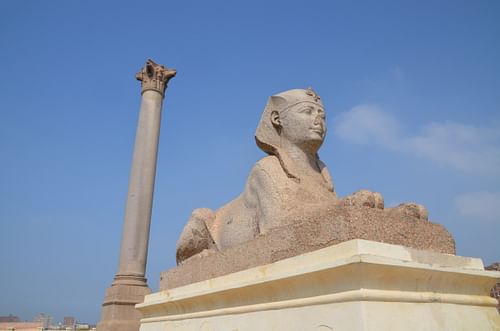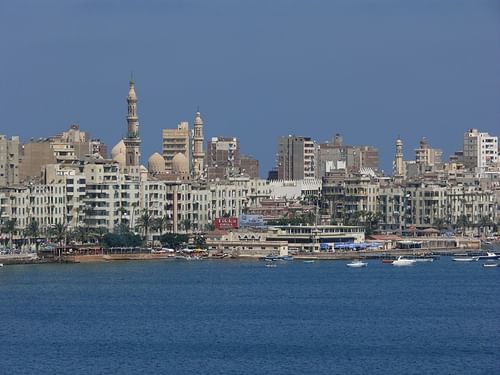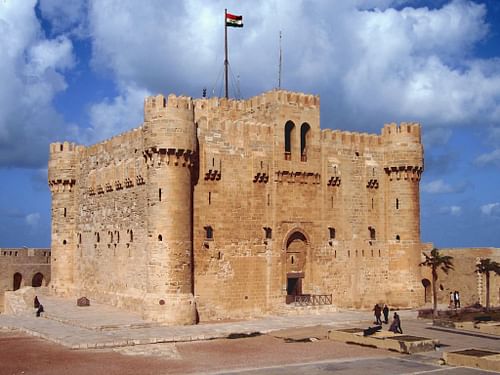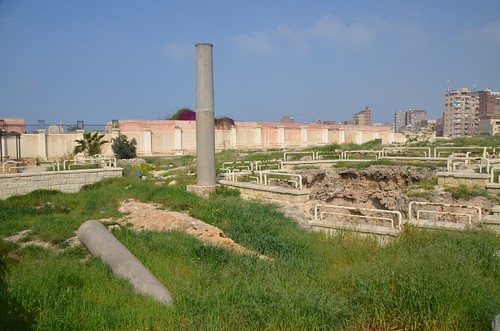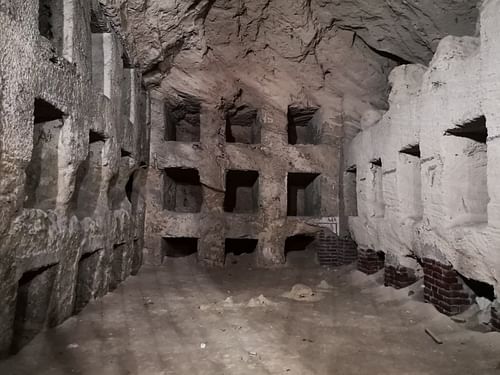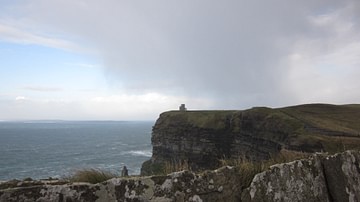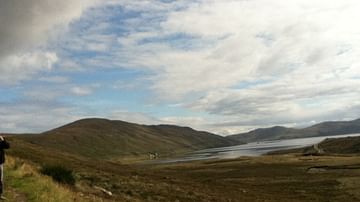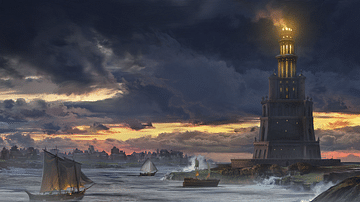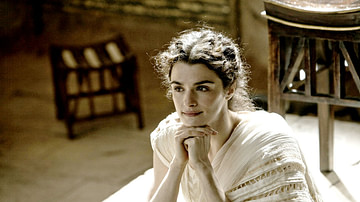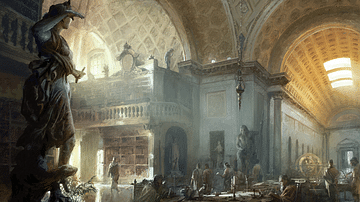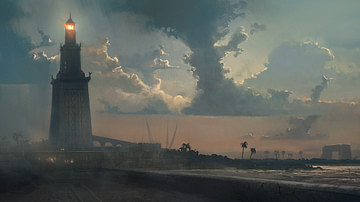Visiting Alexandria, Egypt, once the greatest cultural center of the ancient world, rivaling Athens, Greece, is an unforgettable experience. The food, the wonderful people, and the history at every turn of a street are all dazzling but, if you do not know what you are doing, a trip there can get off to a bumpy start.
It seemed an innocent enough plan: we would wait on the ferry until everyone else had gotten off and then go explore Alexandria. The queue to disembark was quite long, after all, and there seemed no special need to stand with the rest of the passengers when we could sit on the upper deck and look out over the city.
My wife, Betsy, and I were living in Crete, in the village of Gouves just outside of Iraklion, and I had two weeks off in between teaching terms. A friend of ours told us about the Egypto Express, a ferry which came down from Italy, stopped at Iraklion, and went on to Egypt, offering a special package deal for a weekend in Alexandria. I had been wanting to get to Egypt ever since we first arrived in Greece, and this seemed the perfect opportunity.
Alexandria in the morning sun seemed a dreamscape: minarets and far-off towers, the scent of the Mediterranean Sea, and a warm wind blowing. I wanted to try to find the spot, which I had heard was close to the port, where the ancient lighthouse once stood, and look for the location of the Serapeum and library. This was my first trip to Egypt, and I was eager to begin exploring, but still felt happy enough just to be sitting on the boat’s deck looking out at the great city and thinking on its past.
History
Over 2,000 years ago, Alexandria was just a small trading port named Rhakotis until Alexander the Great came in 331 BCE, took the region from Persia, and renamed it Alexandria. He is said to have drawn up the plans for the city himself. After his death, his general Ptolemy I (r. 305-285 BCE) took control of Egypt and improved upon Alexander’s original vision to create one of the most beautiful urban centers of the ancient world. The historian Strabo (l. 1st century CE) described it as among the most impressive he had seen.
Under the rule of the Ptolemaic Dynasty, Alexandria became the jewel of the Mediterranean and an intellectual center which rivaled Athens. The legendary library is supposed to have had over 500,000 books on its shelves and the nearby Serapeum – dedicated to Ptolemy I’s hybrid Egyptian-Greek god Serapis – was considered such a breathtaking work of art that other grand buildings elsewhere were compared to it. The lighthouse, one of the Seven Wonders of the Ancient World, was built near the port where ships from all around the Mediterranean basin came to trade.
Ptolemy I wanted to realize Alexander's dream of a multicultural society where everyone was welcome. The story of early, pre-Christian, Alexandria is the story of religious tolerance and cross-cultural acceptance, and its fall was precipitated by the opposite. The new religion of Christianity had no patience for the older religions of the Jews and pagans of the city and, as the faith gained power in the 4th century CE, it exercised it in the destruction of temples and precincts sacred to the old gods. In 415 CE the philosopher and scientist Hypatia of Alexandria was murdered in the street by a Christian mob, and many scholars mark this event as the beginning of the city's decline.
Misunderstanding
As we sat there on the boat that morning, though, Alexandria seemed glorious, and noting that everyone else had left, we decided to begin exploring. We walked down the plank onto the concrete of the port. Some Egyptian soldiers were standing in a group quietly about 30 feet (9 m) away in their white uniforms, holding shiny black weapons. A number of them had come on board earlier, and we all had to queue up and present our passports and go through customs, so I did not pay them any attention now. My focus was on an obelisk I saw up ahead, partly obscured by palm trees, and I took Betsy's hand to hurry her along.
Suddenly I heard the pounding of heavy boots on asphalt and, in a moment, we were surrounded by the soldiers all pointing their weapons at us. I held up my hands asking, "What? What's the problem?" and the captain said something sharply in Egyptian. I switched to Greek, "to provlima?" and the captain said something else. All the safeties on the weapons were clicked off in unison, and he gestured for us to follow him.
We were marched across the port, flanked by the soldiers, the captain in front of us. I took Betsy's hand, but we were both too scared to actually look at each other. There was a large airplane hangar up ahead, and we all went in through the enormous arch. Tables were set up on either side of a wide aisle, and there were various customs agents filing away forms or writing on them. Up ahead, far at the other end, was another archway with two open doors, one on each side. As we moved toward it, I could hear someone being beaten beyond the door to the right, and I started calling out to the clerks at the tables for help.
"Anyone speak English?" and then switched to Greek "Milate Anglika? Milate Ellenika?" and then tried German "Sprechen sie Deutche?" and even French, although I hardly knew the language. No one responded, and we were getting closer to the archway. I kept yelling, though, and finally a small man in an olive-green suit hurried out from behind his table and spoke to the captain who then stopped. This man spoke Greek and English and I explained to him that I was an American professor living in Greece who was only here for a weekend vacation. We had already gone through customs on the boat, I explained, and I wanted to know why we seemed to be under arrest and heading for torture.
The man spoke with the captain for a few moments, and then the captain gave an order, and his soldiers clicked the safety on their weapons back on and stood at ease. The man then explained to me how drug dealers often arrive in Alexandria aboard the Egypto Express and wait until everyone else has left the ship; then they slip into the city undetected. The captain assumed that we were two such drug dealers. All was clear now, the man said, and they were sorry for the misunderstanding. I wanted to ask him exactly how we looked like drug dealers and what exactly a drug dealer looked like but was too relieved and, also, I just wanted to get out of there.
We thanked the man, thanked the captain, thanked the soldiers, and hurried back to the ship. Once onboard, we vowed never to leave it again. We would just enjoy the city from the safety of the upper deck. We did not actually have to walk the city, after all. We were sure we could have just as good a time looking at it from a distance. After a few drinks and about an hour, though, we realized it was silly to just sit on the boat all day, and we ventured out again.
Exploring the City
The first wonderful sign of success as we came down the plank was the absence of any soldiers with guns. We crossed the port without incident at a quick walk, but the memory of being marched to the hangar hung heavy on both our minds. Without a word, the walk turned into a trot and then a run. While we were on the boat, I had asked a steward about the site of the lighthouse and found I was completely wrong in my guess.
I had thought it was close to where we were docked on the western port side. It turned out the 15th-century CE Fort Qaitbey was the exact location of the ancient pharos (which I really should have known since it stands on Pharos Island) and we headed off for the eastern side of the port to find it. I had completely forgotten about the obelisk I saw earlier. I never did find out what it was.
Fort Qaitbey may not be one of the ancient Seven Wonders but it is quite impressive. It was built by the Mamluk ruler Quait-bey (r. 1468-1496 CE) between 1477-1480 CE for defense of the harbor. Quait-bey was considered a harsh dictator who levied too many taxes on the people, but his reign was still considered among the best, and he is remembered as a great monarch who cared for the people.
You approach the gates from the port walking down a wide avenue with the citadel towering against the sea and sky. We could take a guided tour or self-guided and went with a guide. Admission is more expensive for foreigners than for Egyptians. Our guide reiterated the fact that the fort is built on the foundation of the lighthouse, which was damaged a number of times over the years by earthquakes; it finally fell completely in 1303 CE. What was not carted away for building projects is still in the Alexandrian harbor.
Walking up to the fort, I thought it remarkable, but the interior is even more fascinating. You move from the lowest level up to the top and every floor reveals another interesting aspect to the architecture. The walls of the building are limestone, and sometimes you have the sensation of walking through a cave. The mosque located inside is the oldest in the city. At the top, we looked out to the sea, and this is the closest one can get to standing at the famous Lighthouse of Alexandria.
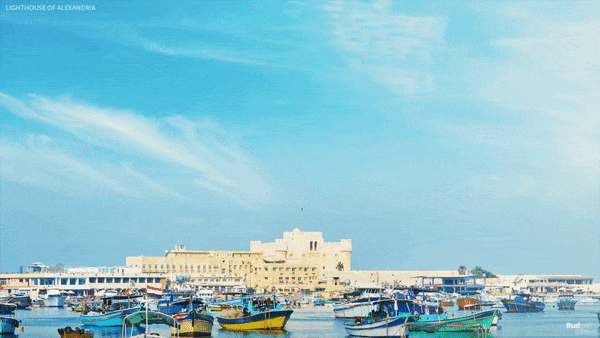
Here the guide left us but, before he went, I asked him where I could find the ruins of the Serapeum. He directed us toward Pompey's Pillar, which he said was less than 20 minutes walk into the city. He was wrong but I have never held it against him as it gave us a great opportunity to explore. We had some excellent calamari and seafood salad at a nearby cafe and then went on.
Pompey's Pillar is a misnomer. The pillar was actually erected during the reign of the Roman emperor Diocletian (r. 284-305 CE). Egypt was under Roman rule at that time, and Alexandria revolted. Diocletian himself arrived to direct the siege of the city which fell after eight months. Instead of punishing the citizens, Diocletian helped them rebuild and, as there was no food in the city, ordered that a large portion of the grain shipment due Rome be distributed to the people. He also exempted the city from taxes until it had fully recovered. In gratitude, the people raised this pillar of red granite 91 feet (28 m) high with a diameter of 6 feet (2 m) with an inscription in the emperor's honor.
A visit to the pillar is almost surreal because the Serapeum is directly below it and all around the buildings, cars, buses, and noise of the modern city hugs closely. The Serapeum was once the most magnificent structure in the city, cited by ancient writers internationally, and now there is little to differentiate it from a vacant lot in any major city but, even so, standing in the ruins was exhilarating. The civic authorities have done their best to enhance this experience by erecting a garden around the site and exhibiting various artifacts discovered during excavation.
We walked from there across town to the Catacombs of Kom el Shoqafa. We met a man on the street selling paintings on papyri sheets of ancient Egyptian figures such as Nefertiti, Tutankhamun, and others; I bought three. The most exceptional was of the scene of Tutankhamun and his wife Ankhsenamun copied from Tutankhamun's famous throne. The man's name was Sama, and he said he would guide us to the catacombs. He seemed pleasant enough and so we negotiated a fee and off we went.
The catacombs were dug in the 2nd century CE and were used for burial. You enter down spiral steps which seem to go on forever. Once you reach the bottom of the stairs the experience is just indescribable. The light is dim and there are statues all around. Sama told us how people in ancient times would carry their dead down the stairs, inter them in crypts in the walls, and then have a celebration for the life of the deceased. They could not carry their empty jugs of wine and beer or their plates and bowls back out, however, because these had been used in the presence of the dead, and so they broke them against the floor and left them. This is how the site gets its name Kom el Shoqafa which means "mound of shards."
Leaving the catacombs, he asked if we would like to visit his friend's shop to look at souvenirs and so we did. After an interesting and memorable experience there, we made it back to the ferry and, later, went into the city for dinner.
The next day we joined a group going to Cairo and visited the museum, the ruins of Memphis, and the pyramids at Giza. We went into the Grand Gallery of the Great Pyramid, took a camel ride out into the desert, and had drinks with the Great Sphinx. Toward sunset we drove into the desert, and night fell as we circled back toward Alexandria to eat in town and then board the boat again. The next morning, we stood on the upper deck, a warm breeze blowing, as the ship moved slowly out into the harbor, heading back to Crete.
That was our first experience with Egypt. We went back a second time and, now being a little more experienced, avoided the pitfalls of our first trip. On our second, we knew enough to get off the boat with everyone else, made arrangements at a nice hotel for two days, and then traveled down the Nile to Luxor and Philae. As the old saying goes, "It is easy once you know how", and that definitely applies to navigating Alexandria, but even if you do not know how, you should make the journey as it is a city that graciously rewards its guests in ways one cannot even begin to imagine.
